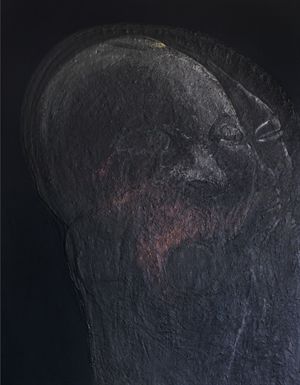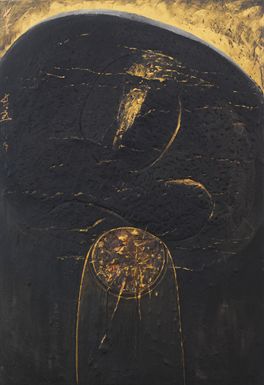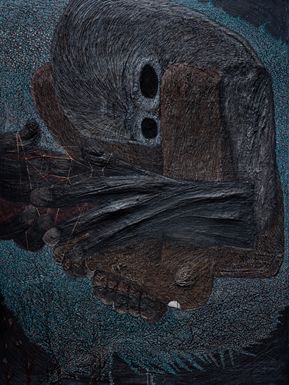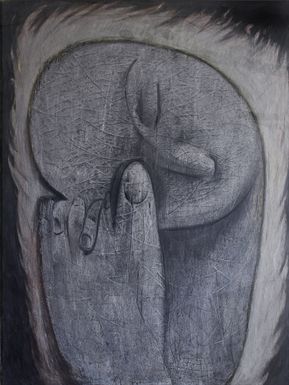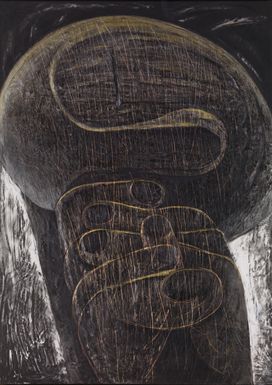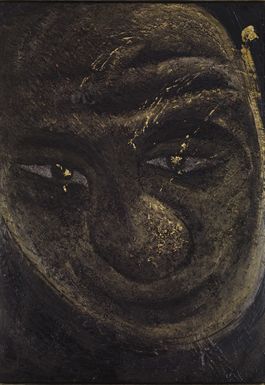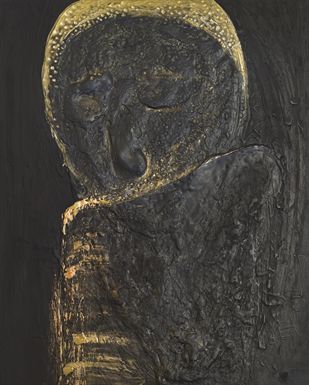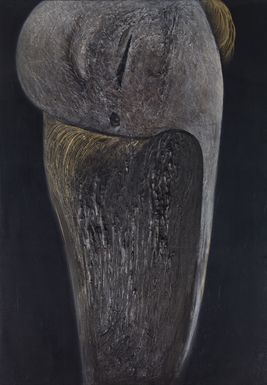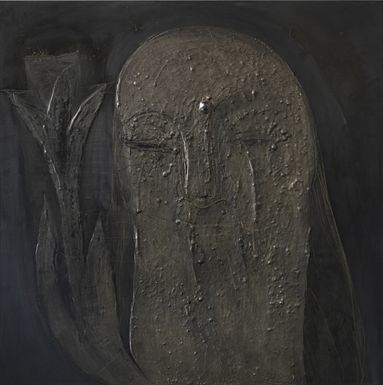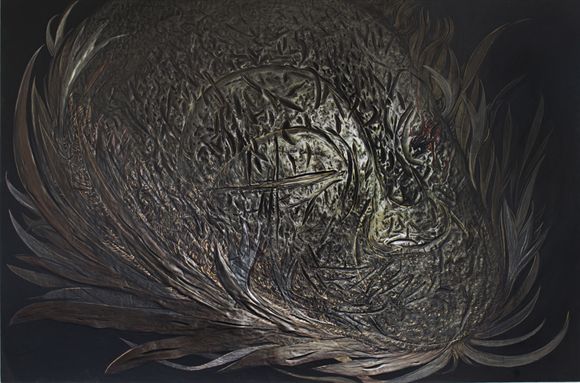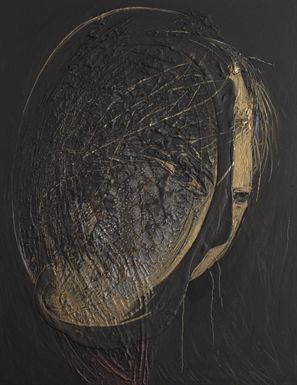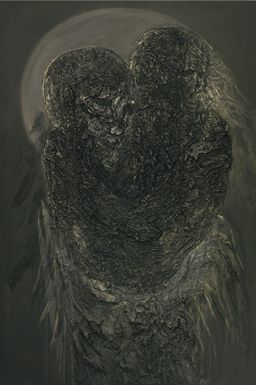Nov 15 - Dec 04, 2014
Press Release
Curator: Wang Chunchen
Present by: Sun Yongzeng
Exhibition Director: Cao Maochao
Exhibition Coordinator: Han Xue, Shen Feifei
Organized by: WhiteBox Art Center
WhiteBox Art Center November 15 – December 4, 2014
“Mind Imprints” – Kim Gil-hu Solo Exhibition will be held from November 15, 2014 in WhiteBox Art Center. It has been four years since his last exhibition in Beijing. Curated by Wang Chunchen, the exhibition will display 17 pieces of works by Kim Gil-hu over the past four years.
Before the recent setting up of his studio in Beijing, Kim had been living and working for a long time in Daegu. Therefore, the rurality and Buddhism from Daegu and the internationalization and diversification from Beijing become the main sources of his creation. Black varnish as medium, he has been used to rubbing against the surface of the canvas to present a certain appearance of dignified bas-relief, for the sake of an ideal portrait of modern sage. Yet it inevitably leads to a mood of grief.
The characters in his works are with barely any expression. Their eyes are closed for the most of time, and they usually have no mouth. It seems that all of them are in a state of Buddhist meditations. This might be due to his preferences to think and create in silent environment and his pursuance for Buddhism spirit. What he said about his creation was “the mind imprints on time and space”. As a result, we are allowed to know about his mind and communicate with it through his works. As a mid-aged backbone artist in Korea, Kim’s works are the newly representatives of Korean contemporary art. What he seeks in art is a transition between modernism and classicism, carrying his creation out with introspection experience particularly in Oriental culture.
Born in Korea in 1961, Kim Gil-hu now lives and works in Beijing as well as in Daegu. He has participated in many international group exhibitions and held his solo exhibition for a lot of times. His works have been collected by various art museums worldwide.
Curator Article
Mind Imprints-The Paintings of Kim Gil-hu
Wang Chunchen
Nowadays, painting itself as a practice as well as a topic is still prevailing around the world; instead of declining due to the use of multi-media in contemporary art, it stays in boom. It can be readily confirmed by observing art museums, exhibitions and activities worldwide. However, painting is declared to be dead in modern art history, which is doubtful for the audience.
Therefore, we have to introspect and classify again into the activities of painting: one kind is related only to painting itself and veritable status of the creator instead of the narrative clue and structure of art history. It is the most widespread sort of practice. To some degree, it contains another meaning than art history narration, which is the meaning of subjectivity in reality. The other kind of painting is closely interrelated with art history, and it never exists in the reality without historical narration. It raises the question repeatedly whether painting dies out today, and it always proved to be not. These paintings are about painting itself, going beyond the common cognition which regards identification as the main issue. Instead, they view non-logical, non-narrative and non-visual as a cognitive proposition, which challenges the conceptual composition of human vision and mind. At the moment, these two kinds of painting interact with each other, which leaves the painting itself in a status that correlates with chronological narration as well as subjective consciousness. The sole and independent subjective consciousness that I’ve talked about allows us to observe the practice of painting without any accustomed perceptions from art history narration, thus may exceed the normative modern art history narration.
Kim Gil-hu’s paintings fall in between these two categories, indicating the challenges and strategies of himself as an artist. He captures the historical images, yet not to create narrative art; he deforms the figures, yet not to chase the sense of form of Modernism; he creates his own patterns and textures of painting on the basis of Korean culture and self-perception, and experiences the culture and history with his faithfulness. In general, painting has been a reflection of the inner world of the creator and a trail of self-faith since its emergence. In other words, constructing of contemporary painting is indeed the same of inner world, which maintains its principles though aimed at an elimination of image storytelling. For Kim Gil-hu, he lives in Daegu, Korea----an urban belt which generated influential Korean contemporary art that tremendously encouraged the arousal of the innovative thought in the 70s, thus Daegu had been a precursor of contemporary art in Korea. In my opinion, Kim Gil-hu is a successor of this innovative thought, and treats the Korean contemporary art in a different new way. What he seeks in art is a transition between modernism and classicism, carrying his creation out with introspection experience and lacquer art particular in Oriental culture. His paintings have a splendor of oil as well as an extensity of bas-relief. Above all, he wants to show us a specific sort of spiritual struggle and mental vibration, and an intensive burst of modern minds.
To some extent, his paintings represent the new trend of contemporary art: refreshing the spiritual world and transcending the visual art, etc. This is because the spiritual richness goes far beyond the formal solemnity while the former one is an urgent demand in modern society. Kim Gil-hu helps fulfill this global concern in the practice of painting. In addition, this is a chance for paintings to revive in the new millennium.
October 29th, 2014, during the trip in Michigan, America


